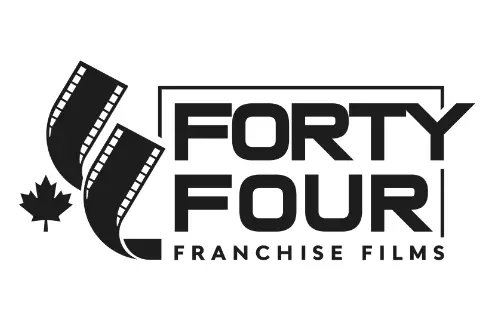Franchise owners and marketing leaders now face a dilemma: How do you keep your brand’s messaging personal and empathetic when the tools at your disposal are designed to replicate, repeat, and automate at scale? As someone who has spent decades steering franchise brands through shifting tides, I can say with certainty that marketing fatigue is not just a buzzword; it’s a threat to your bottom line and your reputation. The challenge is clear: stay human, or risk becoming background noise.
Personalization in the age of automation
Automation has become the engine room of modern franchise marketing. Tools like Marketo and HubSpot now handle everything from email campaigns to social media scheduling, freeing up teams to focus on strategy and growth. Yet, there’s a cost to this convenience. When every franchise location pushes out the same templated messages, customers start to feel like they’re talking to a machine, not a brand that understands them.
The antidote is not to reject automation outright, but to use it with discernment. Automation excels at repetitive tasks, sending appointment reminders, distributing coupons, or following up on basic inquiries. The opportunity lies in reserving your marketing team’s energy for moments that matter: the handwritten note after a customer’s milestone purchase, the personalized response to a frustrated review, the tailored offer that references a customer’s specific history with your brand. Brands that strike this balance see higher engagement and deeper loyalty. According to Digital Silk, 80% of marketing automation users report generating more leads.
Consider the approach used by leading franchise brands that blend automation with authentic human outreach. For example, a fitness franchise might automate its new member onboarding emails, but assign a real coach to send a personalized video message on day three, checking in on the client’s goals. This hybrid model preserves efficiency without sacrificing warmth.
Spotting and preventing marketing fatigue
Marketing fatigue emerges when audiences grow numb to repetitive, robotic messaging. The symptoms are clear: open rates drop, unsubscribe rates climb, and social engagement dwindles. The root cause is often an overreliance on generic content that treats every customer the same. Deloitte’s 2025 Digital Media Trends report highlights that consumers are bombarded with more marketing than ever before, and their tolerance for irrelevance is at an all-time low.
Franchise systems are particularly vulnerable. When dozens or hundreds of locations push out identical messages, the risk of audience burnout multiplies. Customers begin to see the brand as faceless, and loyalty erodes.
Breaking the cycle requires a willingness to refresh campaigns frequently. Instead of relying solely on templated content, inject variety and authenticity. User-generated content, such as customer stories or photos, can breathe new life into your messaging. Live events, whether in-person or virtual, offer a chance for real interaction. Interactive experiences, like polls or quizzes, invite participation and make customers feel seen.
One national restaurant franchise found success by shifting from automated weekly specials to spotlighting local community heroes in their email campaigns. Engagement soared, and unsubscribe rates fell. The lesson is clear: audiences crave content that feels relevant and real.
Choosing tools that support the human touch
The technology you select for your franchise marketing should not just automate, it should personalize. AI-driven platforms are now capable of analyzing customer data to deliver tailored messages based on purchase history, location, and preferences. HubSpot and Marketo, for example, allow franchises to set up rules that customize content for different segments, ensuring that no two customers receive the exact same message unless it makes sense.
Dynamic content personalization goes beyond using a customer’s first name. It means sending offers based on what a customer actually cares about. For instance, if a customer always orders vegetarian options at a pizza chain, the system should prioritize sending them new vegetarian menu announcements, not meat-lover deals. This kind of specificity is what separates brands that connect from those that simply broadcast.
Technology should also support human oversight. Set clear guidelines for when automation is appropriate and when human intervention is required. Routine updates, like holiday hours or service reminders, can be automated. But responses to customer complaints, milestone celebrations, or community outreach efforts should always have a personal touch.
Building empathy through training and standards
No matter how sophisticated your tools, the human element in franchise marketing depends on people. Franchisees and their marketing teams must be trained to communicate with empathy and consistency. This starts with a clear articulation of your brand’s voice and values.
Workshops on understanding customer needs, active listening, and crafting empathetic messages are not luxuries, they are necessities. Every franchise location should know how to respond to a negative review with humility and care, how to celebrate customer milestones, and how to inject local flavor into national campaigns.
Messaging guidelines play a critical role in maintaining authenticity. These documents should go beyond grammar and logo usage. They must spell out what empathy looks like in your brand’s context. For instance, a home services franchise might instruct team members to always acknowledge the stress a customer feels during a home repair, rather than just focusing on the technical fix.
Consistency does not mean uniformity. Encourage franchisees to adapt messaging to fit their local communities while staying true to the brand’s core values. This approach preserves authenticity and resonates more deeply with customers.
Measuring the human connection
ROI and click-through rates tell only part of the story. To understand whether your marketing is truly connecting, you need to measure emotional engagement and sentiment. Customer feedback mechanisms, such as post-interaction surveys or direct outreach, provide qualitative insights into how your brand is perceived.
Brand sentiment analysis, powered by social media listening tools, can reveal shifts in public perception. If positive mentions are declining or negative sentiment is rising, it’s a sign that your messaging may be missing the mark.
Qualitative surveys can uncover what customers actually feel about your communications. Are they bored? Do they feel understood? Are they inspired to take action? Quantitative metrics, like engagement and conversion rates, still matter, but they must be interpreted in context. A spike in unsubscribes after a new campaign may indicate fatigue or a misstep in tone.
Monitor these metrics regularly, and be ready to pivot. The brands that thrive are those that listen as much as they talk.
Humanity is your brand’s differentiator
Automation is not going away. In fact, according to Ignite Visibility, automation will only become more prevalent as franchise systems look for ways to save time and money. But the franchises that win in the long run will be those that refuse to let technology strip their messaging of personality and empathy.
Make automation work for you, not the other way around. Use it to handle the repetitive and the routine, but always reserve space for genuine human connection. Invest in training your teams to communicate with empathy. Refresh your campaigns before your audience tunes out. Choose technology that supports personalization, not just efficiency. And measure what matters, how your customers feel, not just what they do.
If you lead a franchise brand, the path forward is clear: treat automation as a tool, not a substitute for humanity. Your customers can tell the difference. In an age of endless noise, the brands that stay human will be the ones that stand out, inspire loyalty, and drive lasting growth.



























